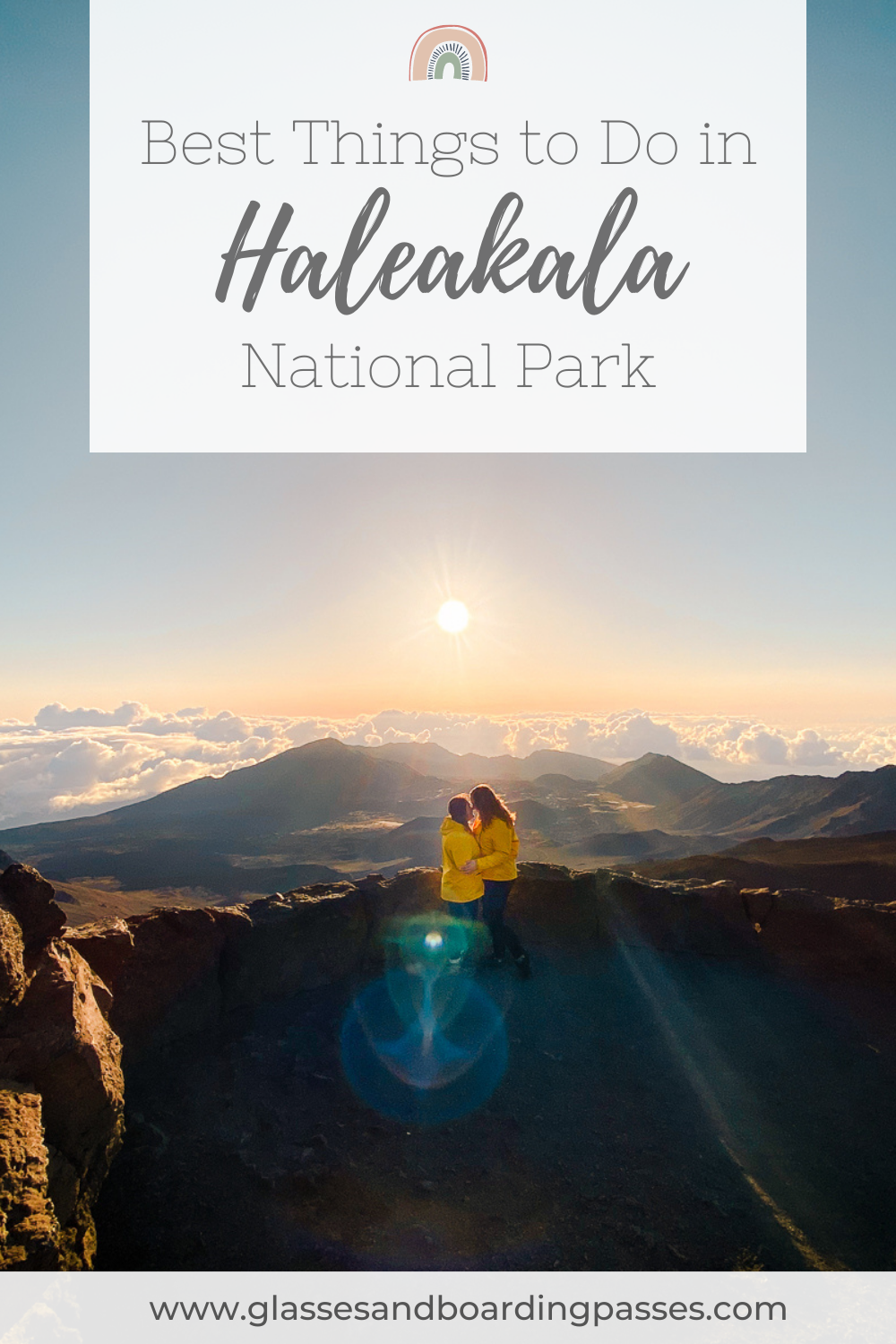
Do you want to experience one of the most beautiful sunrises of your life? Then a trip to Hawaii’s Haleakala National Park should be on your list! With plenty of things to do including hiking, stargazing, and watching sunrise from the summit of a volcano, this park can’t be missed when visiting Maui.
Ready to go? Here’s my list of the best things to do at Haleakala National Park!
Haleakala National Park Overview
Haleakala National Park is located on Hawaii’s island of Maui. Named for Haleakala Volcano, the now-dormant volcano that created the eastern half of the island, it’s completely unique in its diverse and rugged beauty. On one side of the volcano is a rainforest and on another side is a desert. At its base at sea level, it can be warm and sunny, and at its summit, it can occasionally snow!
Entrance to the park costs $30 for a three day pass. The America the Beautiful Annual Pass can also be used to cover this fee.
Interested in visiting other national parks? Check out The Ultimate U.S. National Parks Guide!
You can enter the park from the western side to head to the summit, or the eastern side to explore the forest. Much of the remainder of Haleakala Volcano is wilderness and not easily accessible to visitors.
There are three visitor centers throughout the park. Here, you can get maps and other park information, get your national parks passport stamped, and use the restroom or refill your water. Restroom and water facilities at these centers are also in good condition. Cell phone reception is very spotty, so be sure to download any maps or information you need prior to entering the park.
Best Things to Do at Haleakala National Park
There are a variety of ways to explore the diverse landscapes of Haleakala National Park – here are my favorites!
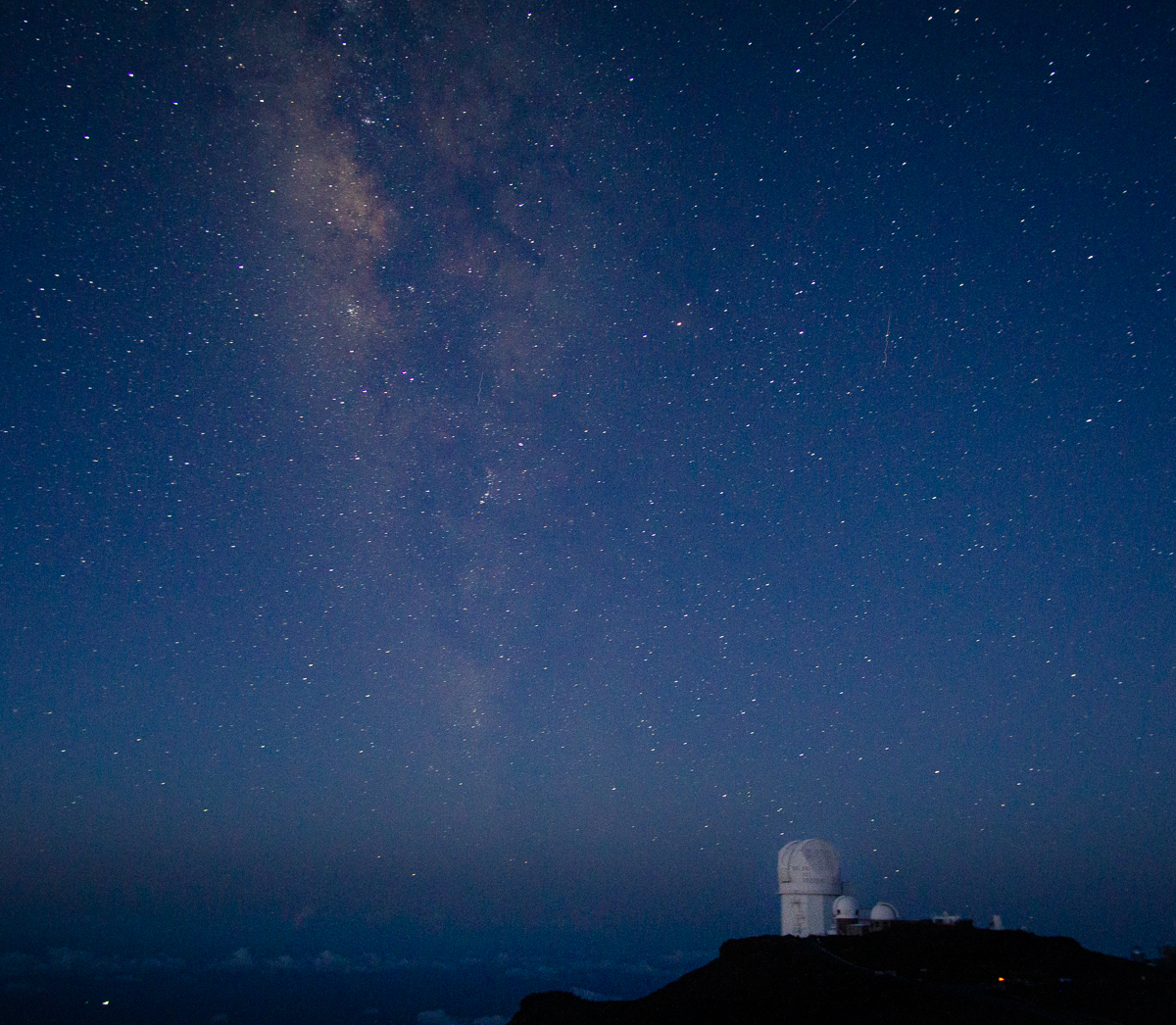
Anytime you can see the Milky Way with your naked eye is a special moment in my book.
Watch Sunrise from the Haleakala Volcano Summit
Sunrise at Haleakala’s summit is hands down one of the most magical experiences I’ve ever had. At 10,000 feet, you’ll be above the clouds and feel like you’re on another planet. Watching all of the twinkling stars of the Milky Way fade into the golden glow of the sun from what feels like the top of the world is definitely worth the early wakeup call.
As this is a very popular activity on Maui, the National Parks Service has created a reservation system to prevent overtourism. Reservations are only $1.50 and are limited to 50 cars per day. You will need to show this reservation to enter the park between 3:00 AM and 7:00 AM. You should reserve this as far in advance as possible to ensure you don’t miss out! (Although if you do, I’ve heard sunset is also a beautiful way to experience the summit, which doesn’t require a reservation.)

This is one of my favorite photos ever – a long exposure of cars driving up to the summit as the sun slowly starts to warm up the night sky.
Getting to the top
The drive to the summit is at least an hour and half from most places on the island. I also recommend arriving at least an hour before the sun is set to come up to ensure you get a good spot and experience the full colors of the sunrise. This means you’ll want to leave no later than 3:30 AM for a 6:00 AM sunrise. If you arrive early enough, you’ll see the sky filled with stars! At such a high elevation, the air is very clear and there is little light pollution. The Milky Way was one of the brightest I’ve ever seen!
The drive to the summit is full of steep zig zags up the volcano – after all, you’re going from sea level to 10,000 feet in less than an hour! It is one of the fastest ascents to such a high altitude in the world. If you get motion sickness, take some medicine before you go.
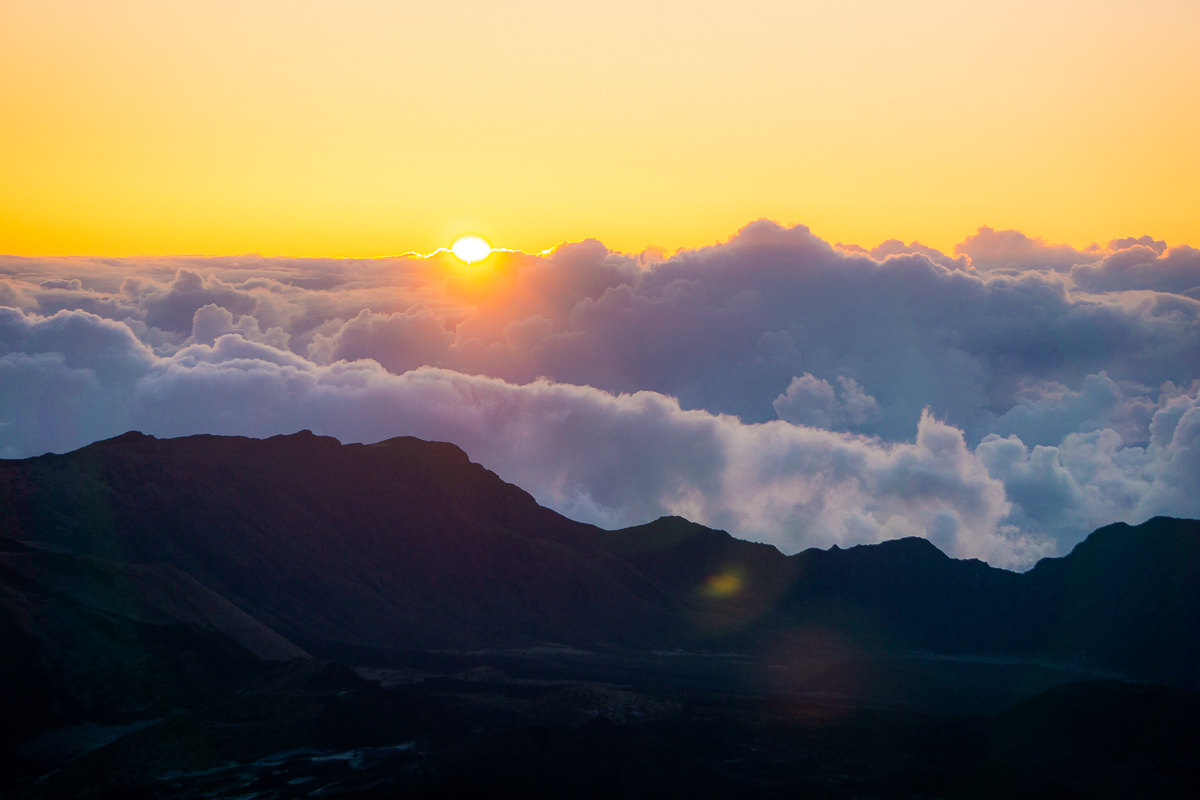
It was almost an emotional experience as the sun broke the surface of the clouds. It was one of the most beautiful moments of my life.
Where to watch the sunrise
When you get to the top, you have a few options for parking and viewing the sunrise. Option one is to stop at the Haleakala Summit Visitor’s Center and hike to the top of the short hill nearby. This will give you a view into the vast volcano crater. Even if you opt not to come here for sunrise, I definitely recommend coming back afterwards just for the views!
Option two is to continue past the visitor center to the larger parking lot marked ‘summit.’ Puʻuʻulaʻula, also known as the Summit Observation Deck and building, are nearby and a popular viewpoint where you can watch sunrise over the jagged edges of the crater. This makes for a unique contrasting view of the dark mountains and bright sky! (Plus, the building blocks the cold winds!) This is where we picked to watch the sunrise.
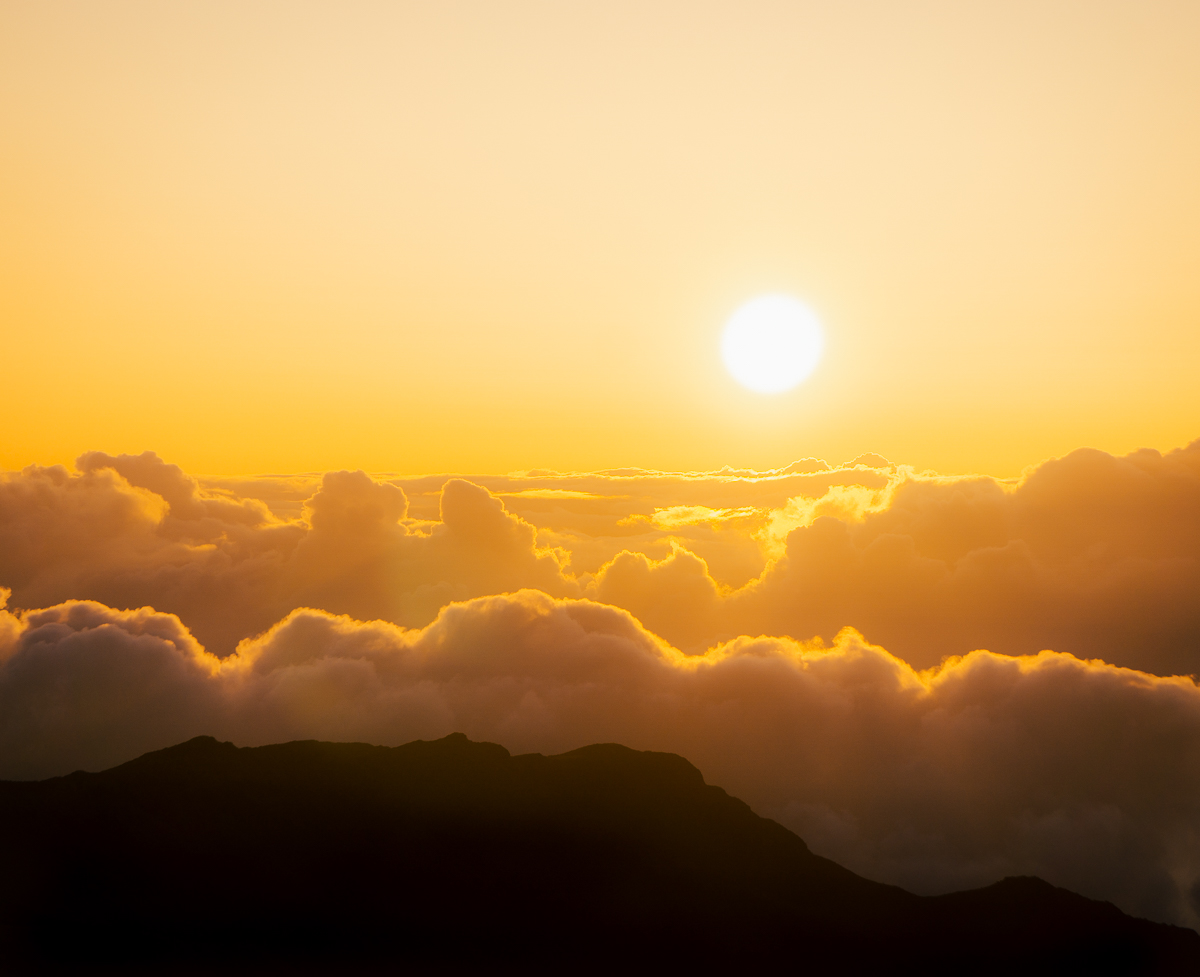
Everything was golden once the sun was up.
Other things to expect
Since you’ll likely be outside for at least an hour and a half, it’s imperative that you dress warmly. It’s typically at least 30 degrees cooler at the summit than at sea level. When we visited, it was 32 degrees Fahrenheit!
As the sun prepares to rise, a park ranger will give some cultural background on the importance of sunrise on Haleakala to the native Hawaiian people. After all, Haleakala means, “house of the sun” in Hawaiian. The volcano is a culturally sacred spot to the native Hawaiians, so please keep this in mind and be respectful during your visit.
Once the sun is fully risen, you can explore the area around the summit. On a clear day, you’ll be able to see the mountains in west Maui, the ocean, and even some of the other Hawaiian islands! There are also several good hiking trails near the summit (more on that below). Biking down the volcano is another popular option! While we didn’t personally do this, I have heard Bike Maui is a good place to book this experience through.
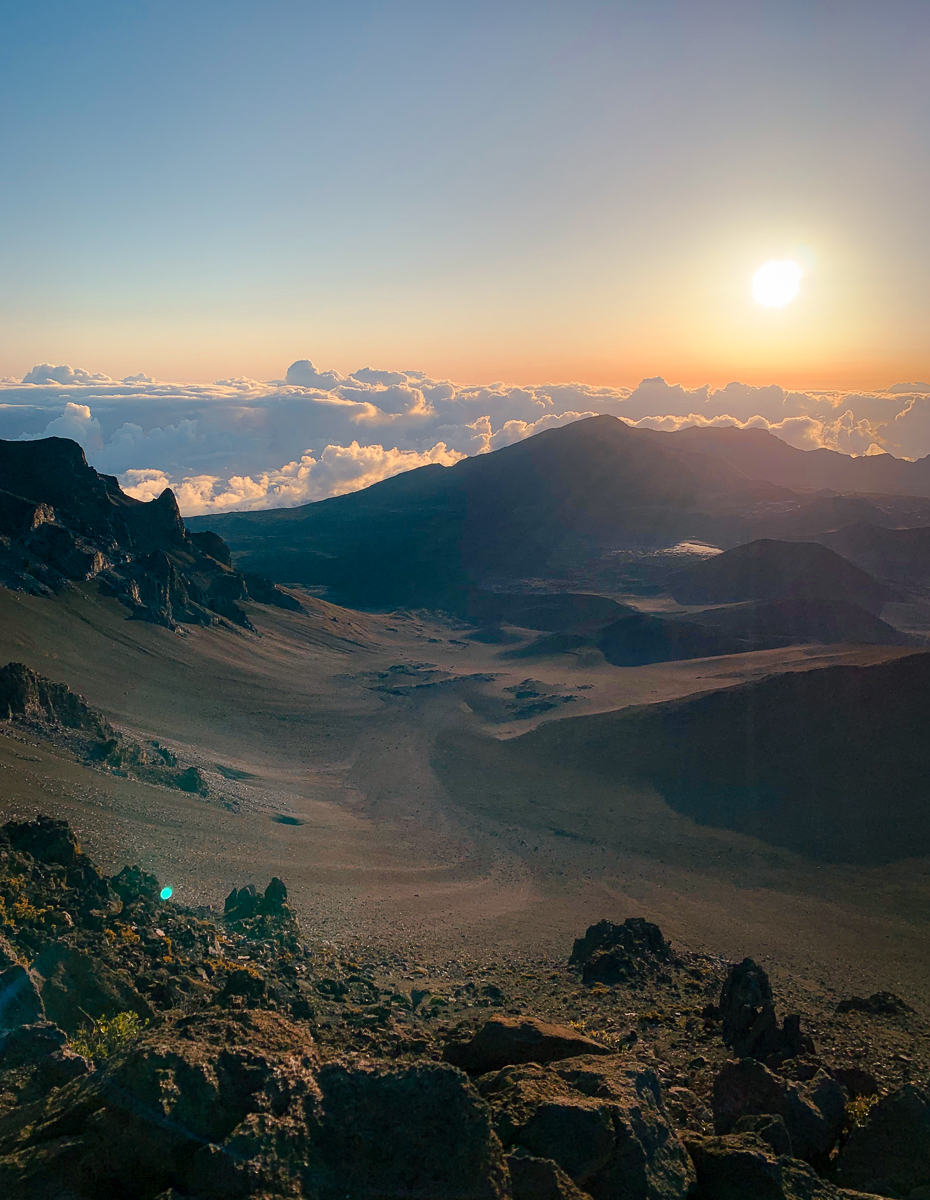
A peek into the crater of Haleakala volcano.
Explore the Haleakala Summit and Crater
Make sure to spend some time just wandering around the summit area as well. There is no shortage of beautiful vantage points! Plus, this is the home to the Haleakala Silversword plant, which can only be found in the high altitudes of Haleakala National Park!
Keoneheʻeheʻe (Sliding Sands) Trail
The Keoneheʻeheʻe (Sliding Sands) Trail is one of the most popular trails near the Haleakala summit, as it allows visitors to get up close and personal with the crater! While the entire trail is 11 miles, you don’t have to do the whole thing – you can go down to whatever vantage point feels good to you, and then turn around. There are several popular vantage points to visit!
One mile in, you’ll come to a natural vantage point that looks into the crater and at the various eruption sites. While short, this is a sandy trail that can be quite steep at 500 feet in elevation change. Hiking back up in the altitude will have you out of breath in no time!
You’ll reach the crater floor at 3.9 miles in, where things level off. If you continue to 5.7 miles in, you’ll get to Pele’s Paint Pot, a series of gorgeous red and orange hills. You will completely forget that you’re in Hawaii with this landscape! Note that at this point, it will be easier to just complete the trail than to go back the way you came.
There is a campsite part way along this trail as well with both cabins and room for tents. If you’re prepared for a steep climb and want to see some rugged terrain, you can’t miss this hike!
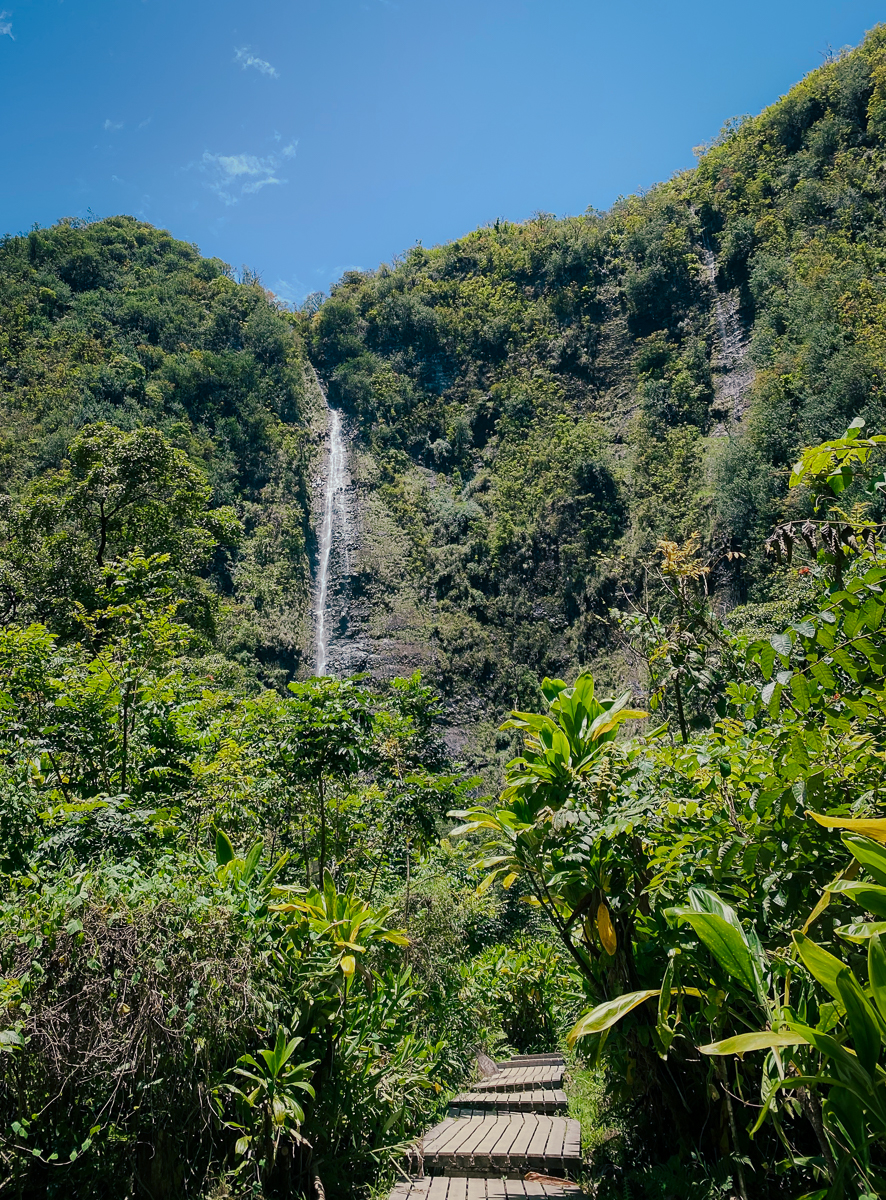
The end of the Pipiwai trail – completely different from the deserts of the summit, am I right?
Hike the Pipiwai Trail
For a completely different side (literally!) of Haleakala National Park, visit the Kīpahulu District on the eastern side of Maui. Opposite from Haleakala’s desert-like crater in almost every way, this lush, humid forest region is full of beautiful flora and fauna.
The best way to experience this region is by hiking the Pipiwai Trail! This 4-mile out-and-back trail takes you from the Kīpahulu Visitor Center through a bamboo forest and ultimately to the gorgeous 400-foot Waimoku Falls.
The trailhead is located about 12 miles past Hana on the famous Road to Hana drive. This is about as far as you can go on the road before hitting the infamous ‘backside of Haleakala’ that most rental car companies prohibit renters from driving. Arrive as early as you can, as this is a very popular trail.
The trail has a total of about 750 feet of elevation gain – 600 on the way in and the rest on the way out. The majority of it is in the first mile, which was quite steep. Take your time and watch out for all of the rocks and tree roots that litter the trail. Hiking shoes are a must here in my opinion (although we did see some people doing it in sandals, which I can’t even imagine was comfortable or easy).

The giant banyan tree provided some much-needed shade along the trail!
Highlights on the Pipiwai Trail
About 0.75 miles in, you’ll come across a giant banyan tree! It’s a perfect spot to stop and rest in the shade and take a few fun photos.
A mile in, you’ll reach the bamboo forest. This part of the trail is very shaded and fairly flat – a much needed respite from the earlier steep climb! There are even several boardwalks throughout this portion of the trail. It was so serene, you could hear the bamboo clacking together in the breeze as the sun flitted through the stalks. It felt like we had been transported to Asia!
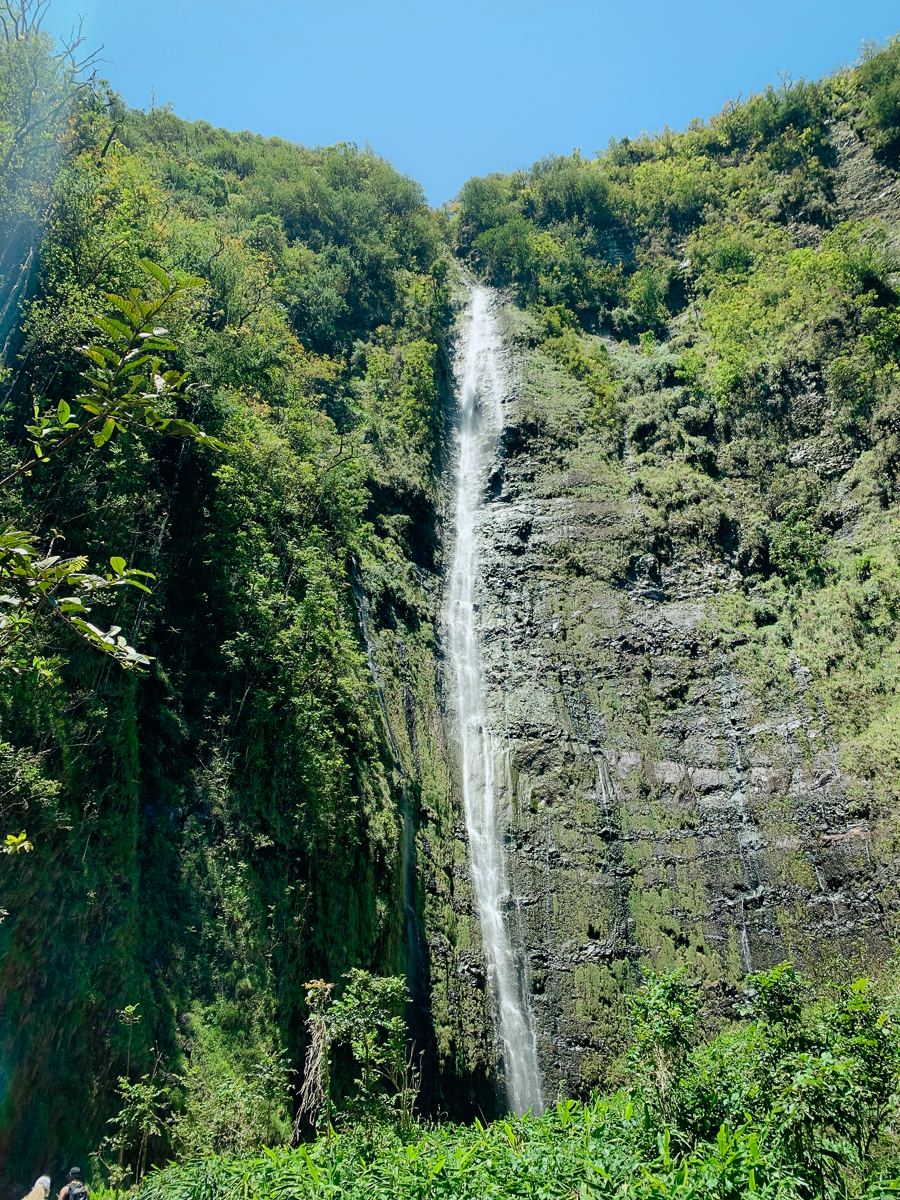
The towering Waimoku Falls! It’s hard to capture how tall it was in a photo – you really have to see it in person!
At about two miles exactly, you’ll reach the grand finale: Waimoku Falls! Water plummets 400 feet down a sheer cliff made of a lava rock. It’s hard to capture the height of the falls in photos – it’s something you truly have to see in person.
There is a sign marking the end of the trail, but to be honest, almost every hiker continues past this sign to the base of the falls. The base creates a small boulder-filled pool before trickling off into Pipiwai Stream. If you bring your swimsuit, you can cool off in the refreshing water here.
We didn’t swim, but we did sit in the clearing for a while to have a snack and enjoy the views. After the climb in the heat, my legs needed a break! There are a few other areas along the lava rock where water trickles down, making this truly a beautiful climax to the hike.
When you’re ready, it’s time to turn around and head back out. Be careful as much of the trail can get slippery with mud, especially towards the top.
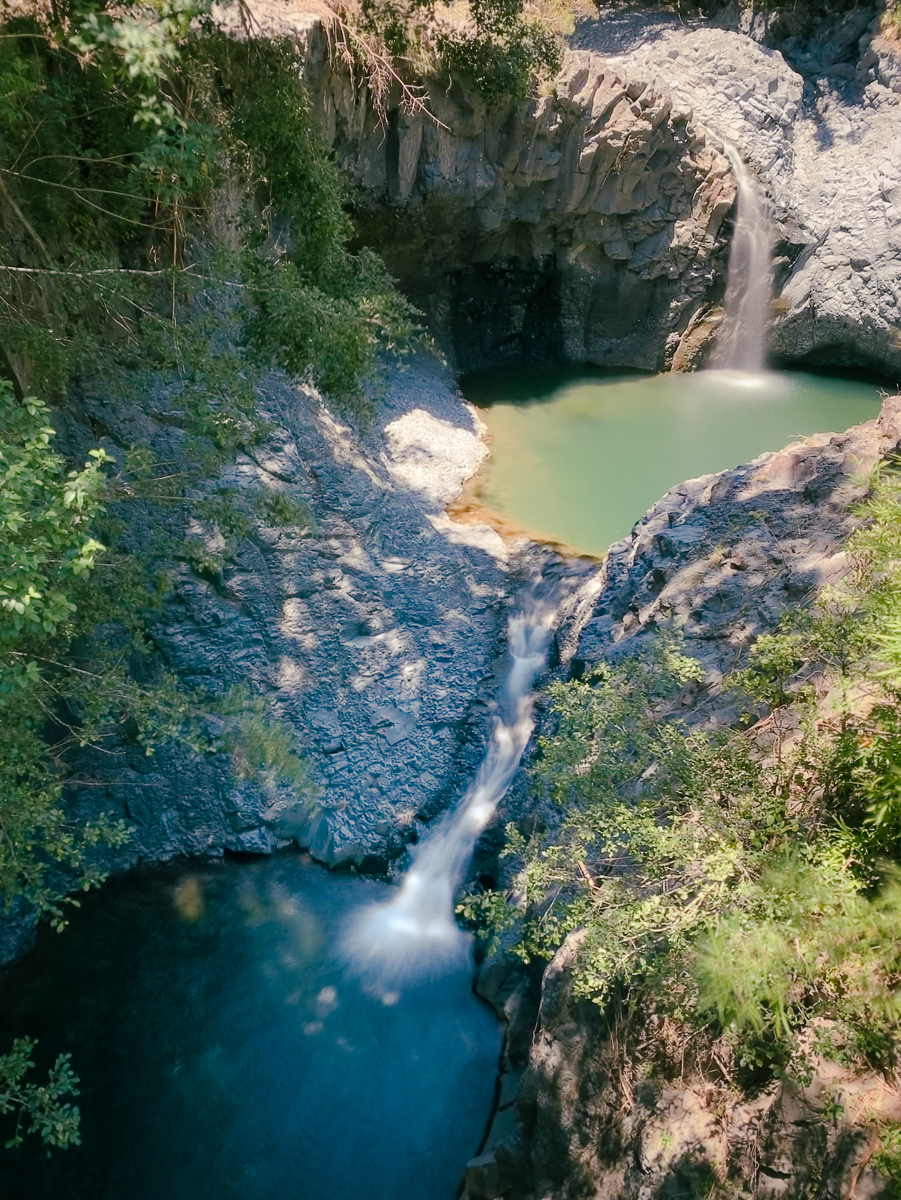
These pools can be seen from the Pipiwai trail, but are similar to the Seven Sacred Pools you can see closer to the coast!
Bonus: Kuloa Point Trail
If you’ve still got the energy, I recommend hiking the Kūloa Point Trail to see the mouth of ‘Ohe’o Gulch. The trailhead is just opposite the Pipiwai trail. This short 0.5 mile loop takes you past the mouth of the Seven Sacred Pools and along the ocean coastline. To be honest, I thought I was too tired to do this hike when we visited, but I really regret it!
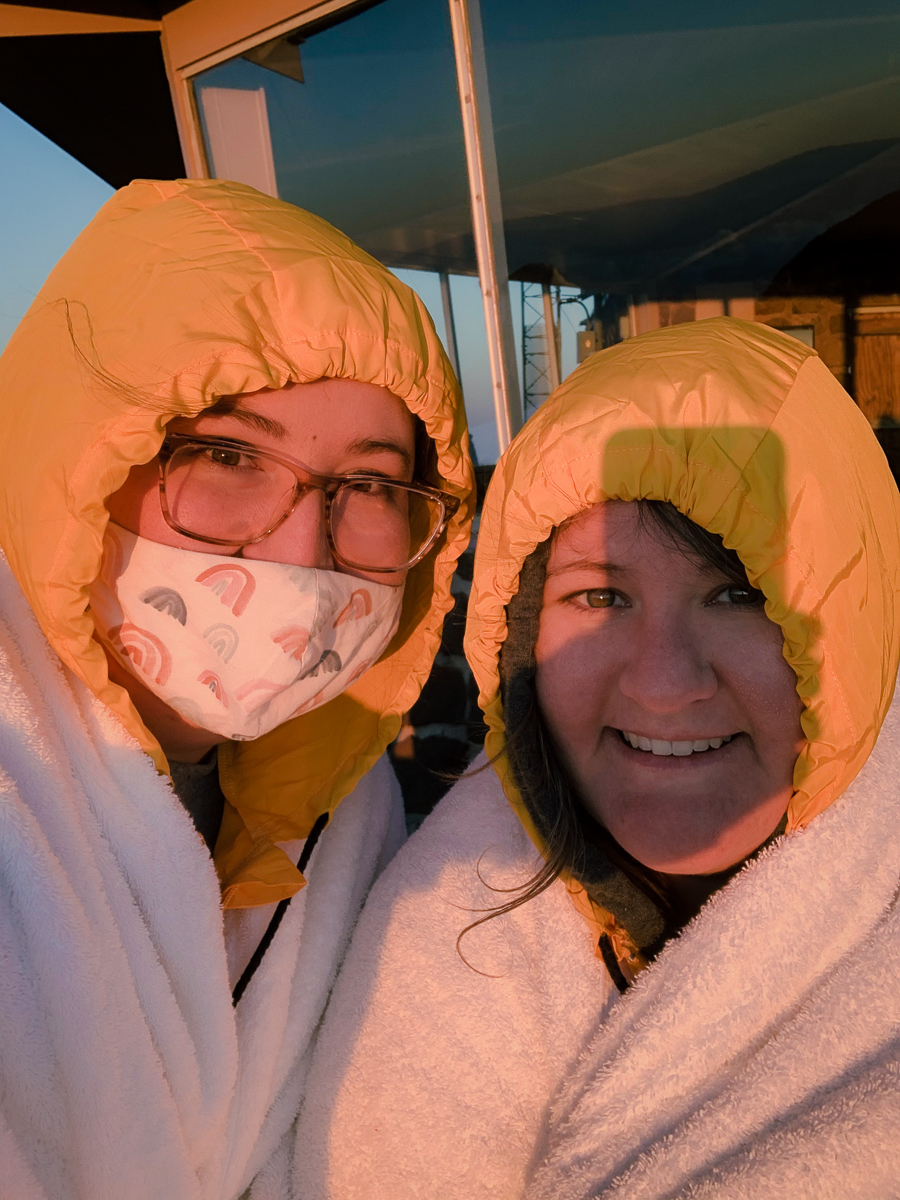
Behind the scenes of us freezing at the summit during sunrise. Yes, those are towels from our hotel that we’re using to try and stay warm.
What to Bring
As I mentioned above, the climate at Haleakala can be quite diverse! Therefore you should be prepared for anything.
Sunrise at the summit of Haleakala National Park can be quite cold. When I visited in April, it was only 32 degrees Fahrenheit! To stay warm, I recommend packing at least a sweatshirt and gloves. We also used blankets from the hotel to try and stay warm! A headlamp or flashlight would also be helpful if you’re planning to stargaze before sunrise. It’s also quite dark up there!
When hiking during the day, especially near sea level, it can get quite warm, so wear layers and bring sunscreen. The sun is quite strong in Hawaii! There are also occasional rain showers in the rainforest, so a light rain jacket would be good to have as well.
No matter where you are in the park, I recommend wearing hiking shoes to help keep your feet comfortable and blister-free. Be sure to also bring water and snacks, as there are very limited food options within the park.
Finally, as with any time outdoors, be sure to follow the Leave No Trace Principles by respecting the wildlife, disposing of trash properly, and leaving the park in better condition than you found it.
Where to Stay
Maui is a fairly small island, so you can realistically stay anywhere and plan a day trip to Haleakala National Park. However, if you want to sleep in and save time driving before sunrise, I recommend staying in upcountry near Paia in one of the many local hotels or Airbnbs. If you’re feeling adventurous, you can camp in tents or in cabins inside the park.
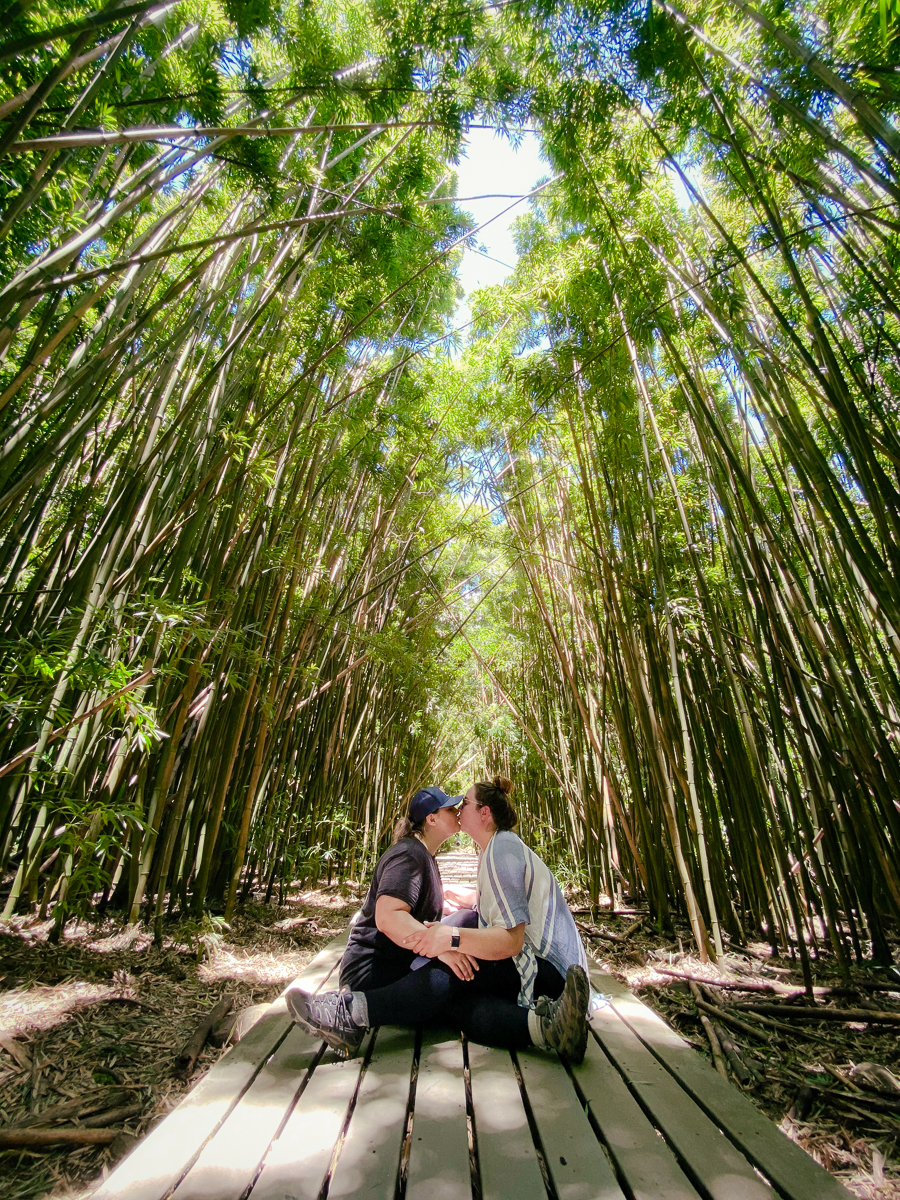
I loved this serene bamboo forest!
LGBTQ+ Considerations
Hawaii is a very LGBTQ+ friendly state, and we felt very welcomed during our visit! In fact, same-sex relationships and non-binary individuals were common in pre-colonial Hawaiin society. After Hawaii became a state, it was the first to legalize same-sex sexual activity, and has a wide variety of legal protections for queer folks.
I particularly love national parks because nature isn’t judgemental. Exploring the beautiful Haleakala National Park in such a welcoming state was definitely a joy for us, and I recommend it to other queer travelers!
Read more: Top Safety Tips for Queer Travelers
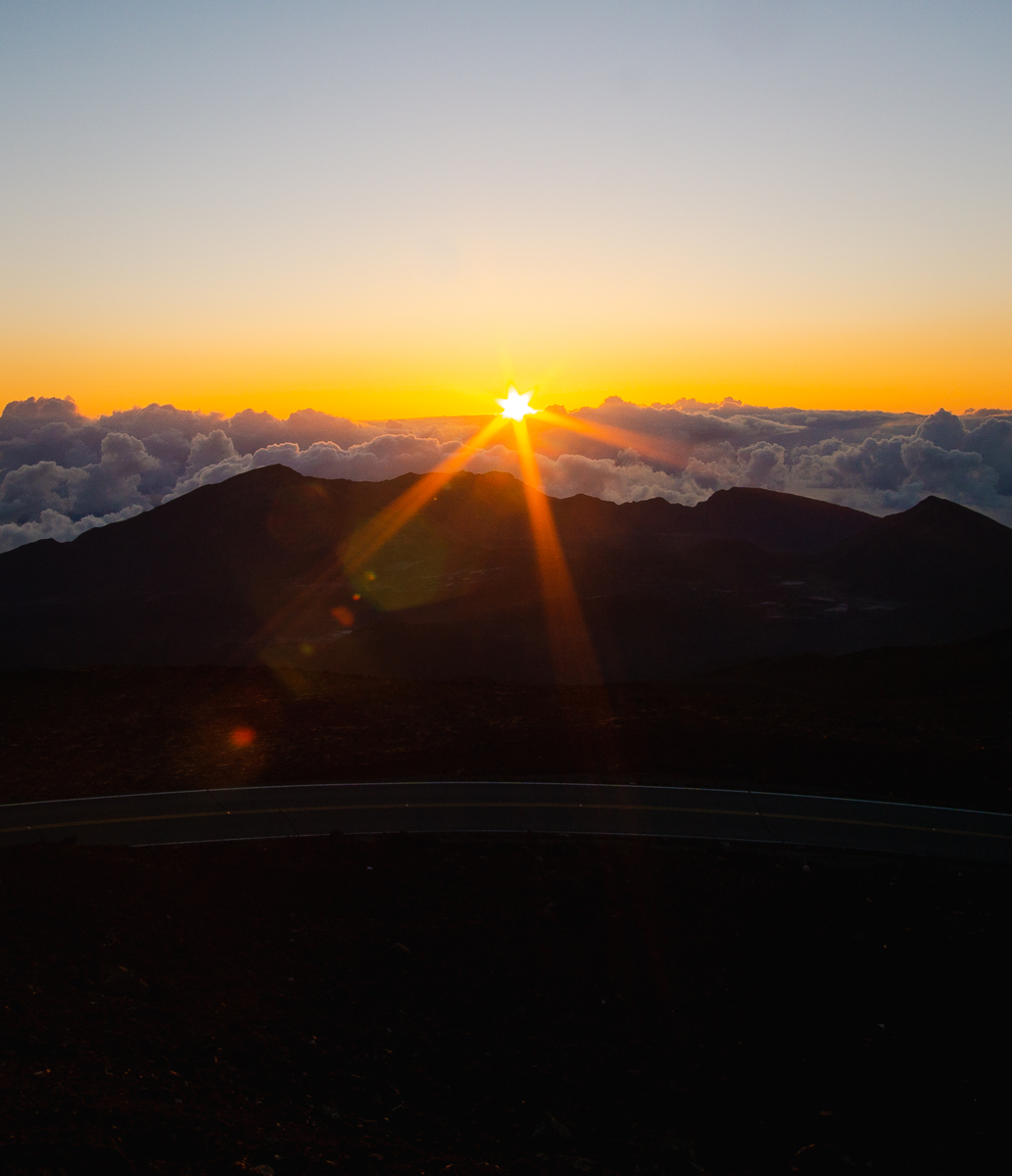
A visit to beautiful Haleakala is not something to miss on your next trip to Maui.
Overall
Haleakala National Park is home to some of the most diverse and extreme landscapes in the world. There is so much to see in such a small area!
Have you been to Haleakala National Park? What are your other favorite things to do? Let me know in the comments!
Note: this post may contain affiliate links. If you click on a link for an affiliate partnership, I may earn a small commission at no extra cost to you. This helps keep this blog up and running. Thanks for your support!
This post was last updated on May 10, 2021.

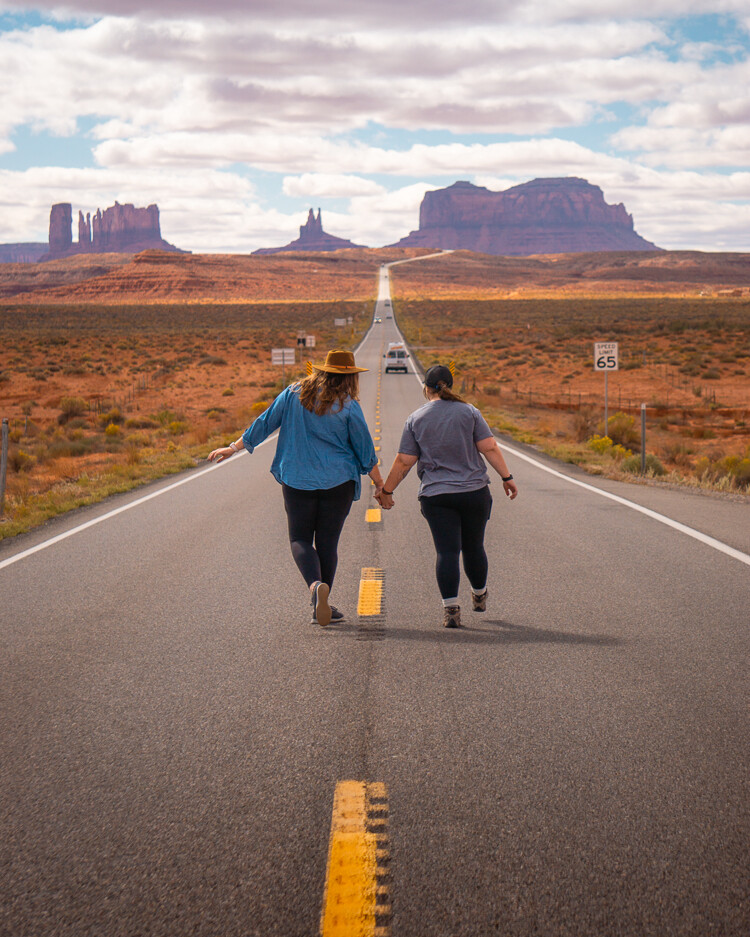
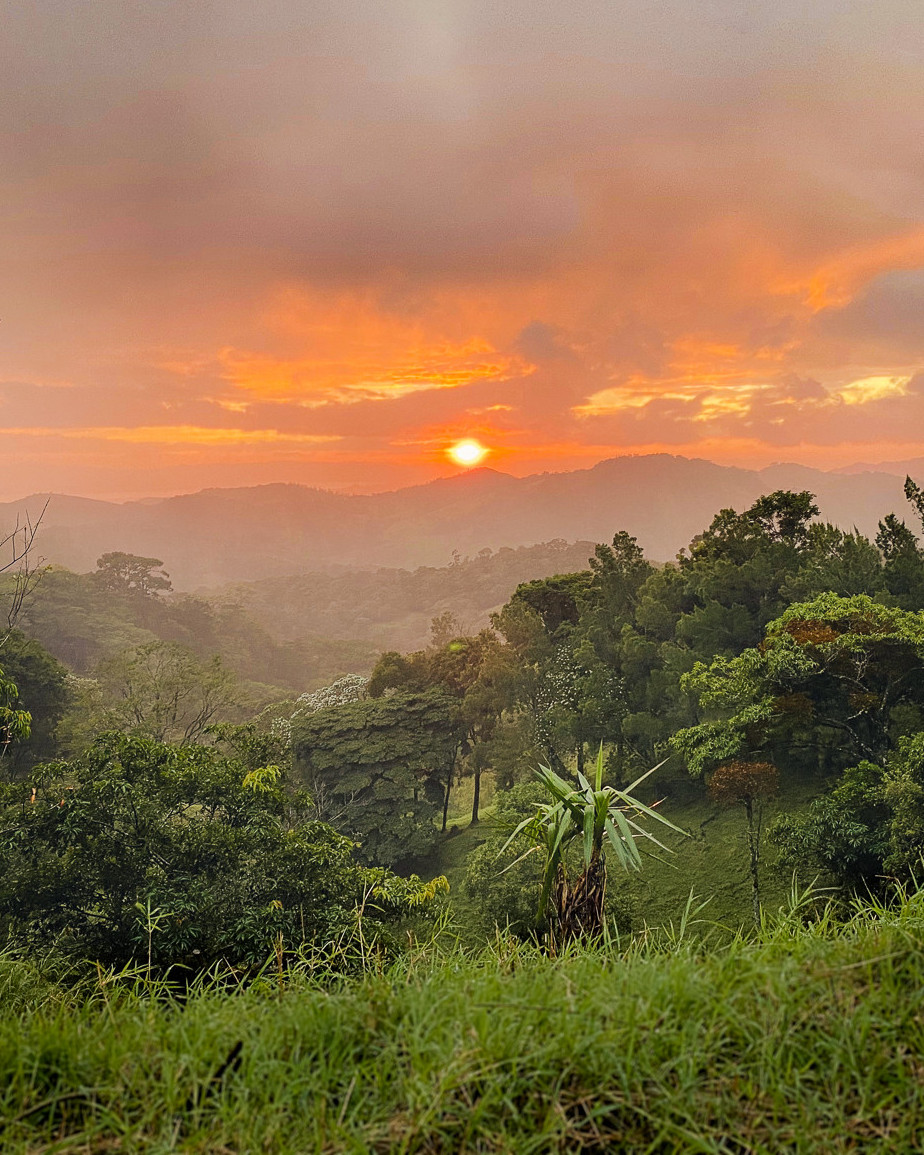
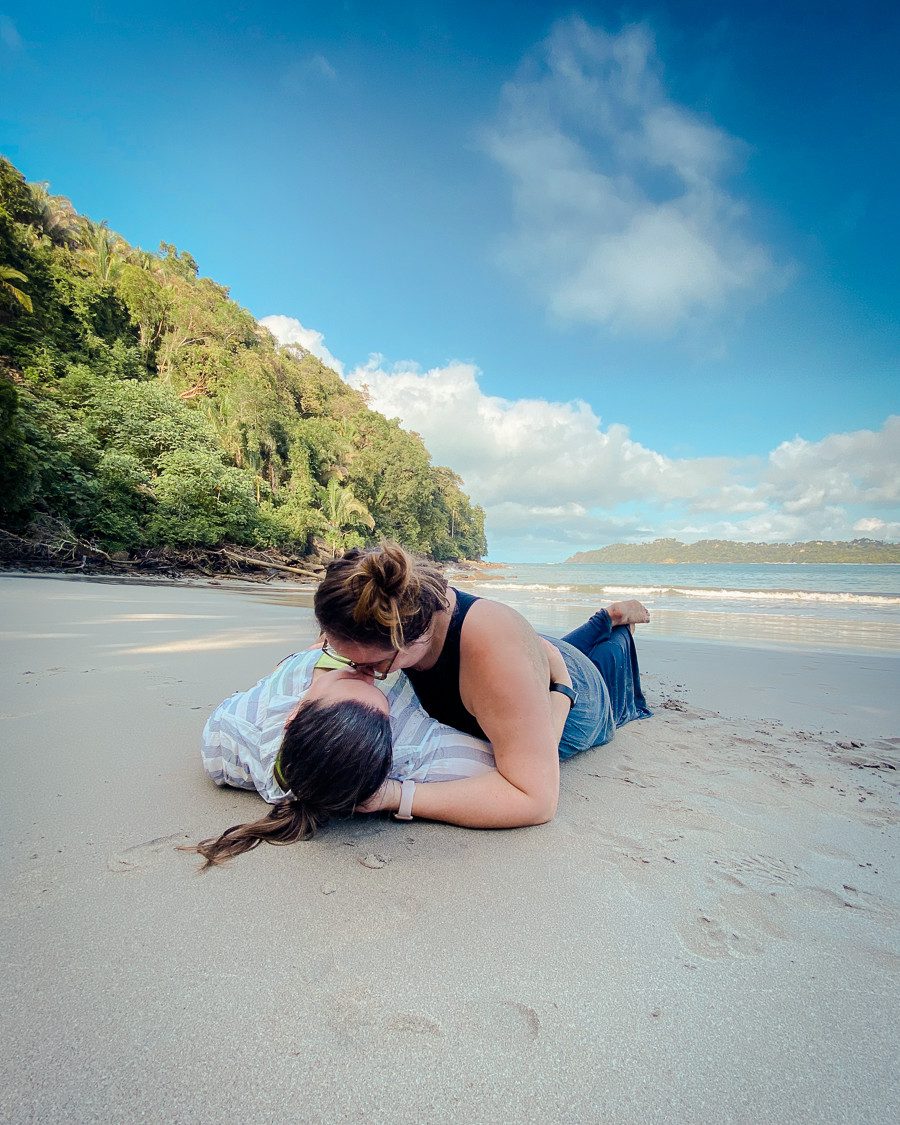
Leave A Comment